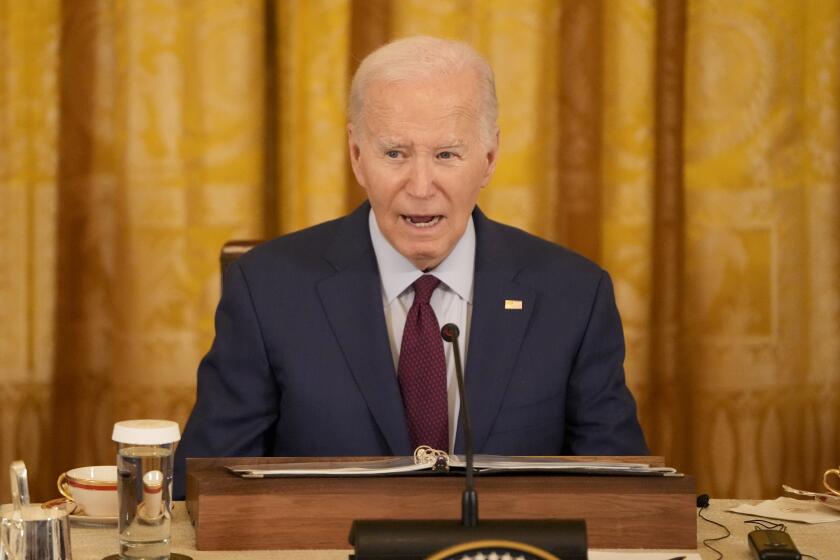Charter schools get ‘more bang for the buck,’ report says
California charter schools get “more bang for the buck” than traditional public schools and may be improving at a faster clip, according to a report scheduled for release today. Still, the charters continue to trail regular public schools in academic achievement and seem to have a tougher time teaching English to students who are learning it as a second language.
Despite the shortcomings, the report “suggests that charter schools are better able to increase student performance in a shorter period of time than non-charter public schools,” said its principal author, Priscilla Wohlstetter, a professor of education policy and director of the Center on Educational Governance at USC. “We’re talking about academic momentum.”
Wohlstetter is presenting the report today at the annual meeting of the National Education Writers Assn. in Los Angeles.
Charter schools are independent, publicly funded elementary and secondary schools that operate outside the bureaucratic structure of traditional school districts. Although they still educate a relatively small percentage of children, their numbers have been growing explosively in California, especially in the area served by the Los Angeles Unified School District.
In the past, reports on charter schools have tended to find little evidence that they do a better job of educating children than traditional public schools, although reports in 2005 by the Charter Schools Assn. and The Times found that charters were improving in academic achievement faster than non-charters.
That was the conclusion of Wohlstetter’s report, Charter Schools Indicators, which tried to find new and more insightful measures of school performance than those currently in use.
Rather than just looking at the results of standardized tests, the study attempted to gauge “academic momentum,” to see if schools are getting better over time, and “school productivity,” to see how their academic achievement relates to the amount of money they spend.
Academic momentum was gauged only over a single school year, which could raise questions about whether it is subject to year-to-year fluctuations. Gauging schools by financial outlay -- what Wohlstetter referred to as “bang for the buck” -- thrusts the study into a long-running debate about whether it makes sense to judge schools by corporate models of productivity.
The USC study adopted other language more commonly seen in corporate reports than in school surveys. For instance, it looked at the liquidity of charter schools, their cash reserves and “direct classroom investment.”
The study found that charter schools’ investments in classrooms were “relatively low” -- 75% or less of total revenue. The Assn. of California School Administrators estimates that traditional public schools, which have higher administrative and overhead costs, spend about 65% of their revenues in the classroom.
Caprice Young, president and chief executive of the California Charter Schools Assn., said the report shows “that, despite the fact that the cards are stacked against charter schools, the students in them improve faster than they do in other schools. What that report shows is that we don’t get to spend as much in the classrooms because we have to spend more on facilities.”
Charter operators have been feuding with Los Angeles Unified over what they say is its refusal to live up to a legal obligation to provide space for the schools. The district insists that it has provided as much space as it reasonably could -- more than 11,000 seats at a cost of more than $100 million.
Charter schools employ far fewer credentialed teachers who may have less experience than their counterparts in traditional schools, the report said.
Both Young and Wohlstetter said they were puzzled by one of the report’s findings: that English language learners in charter schools are much less likely than their counterparts in traditional schools to be reclassified as proficient in English.
“We’re curious about that,” said Young, who is on the advisory board of the Center for Educational Governance. “It’s an interesting statistic, and we don’t know what’s behind it.”
She said it might be a reflection of the fact that there are a relatively large number of dual-language charter schools, where English learners continue being taught for half the day in their native language. She said the association is eager to know the answer and to determine if charter schools can improve their English language education.
The USC report was funded by several large foundations. It was intended to be the first step in a long-term research project whose goal is to establish a publicly accessible website analyzing every charter school in the state.
mitchell.landsberg@ latimes.com
More to Read
Start your day right
Sign up for Essential California for news, features and recommendations from the L.A. Times and beyond in your inbox six days a week.
You may occasionally receive promotional content from the Los Angeles Times.






